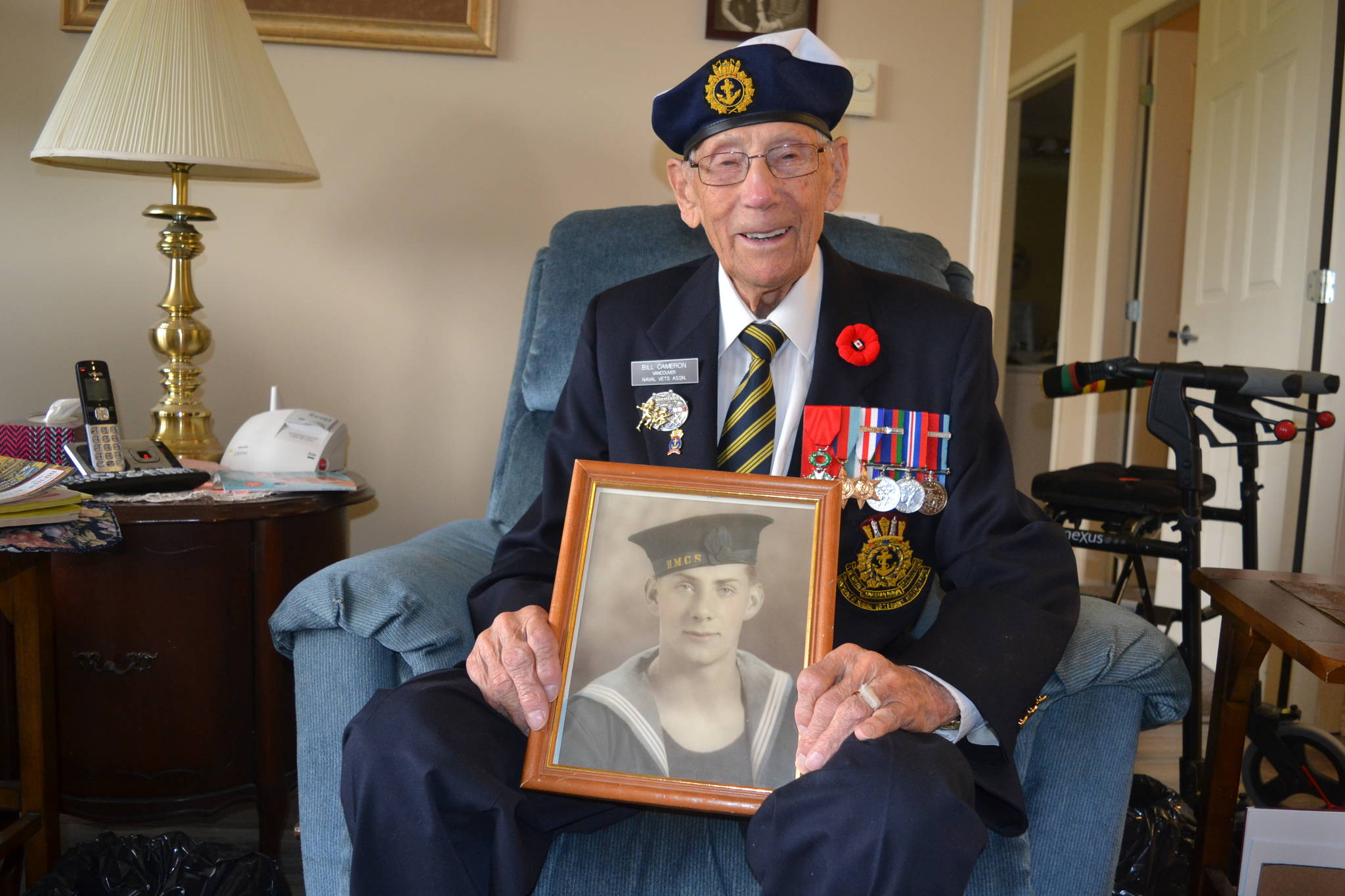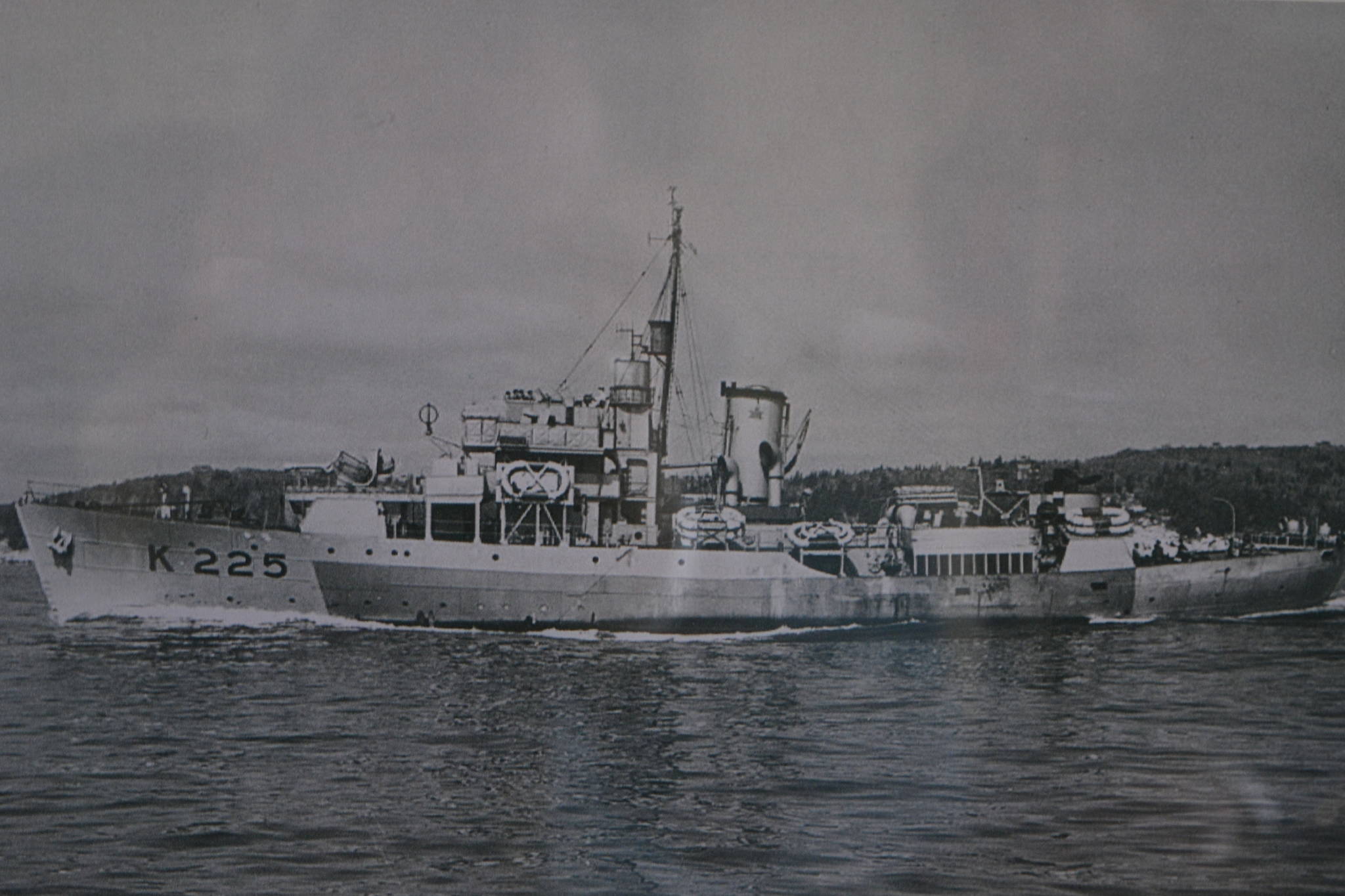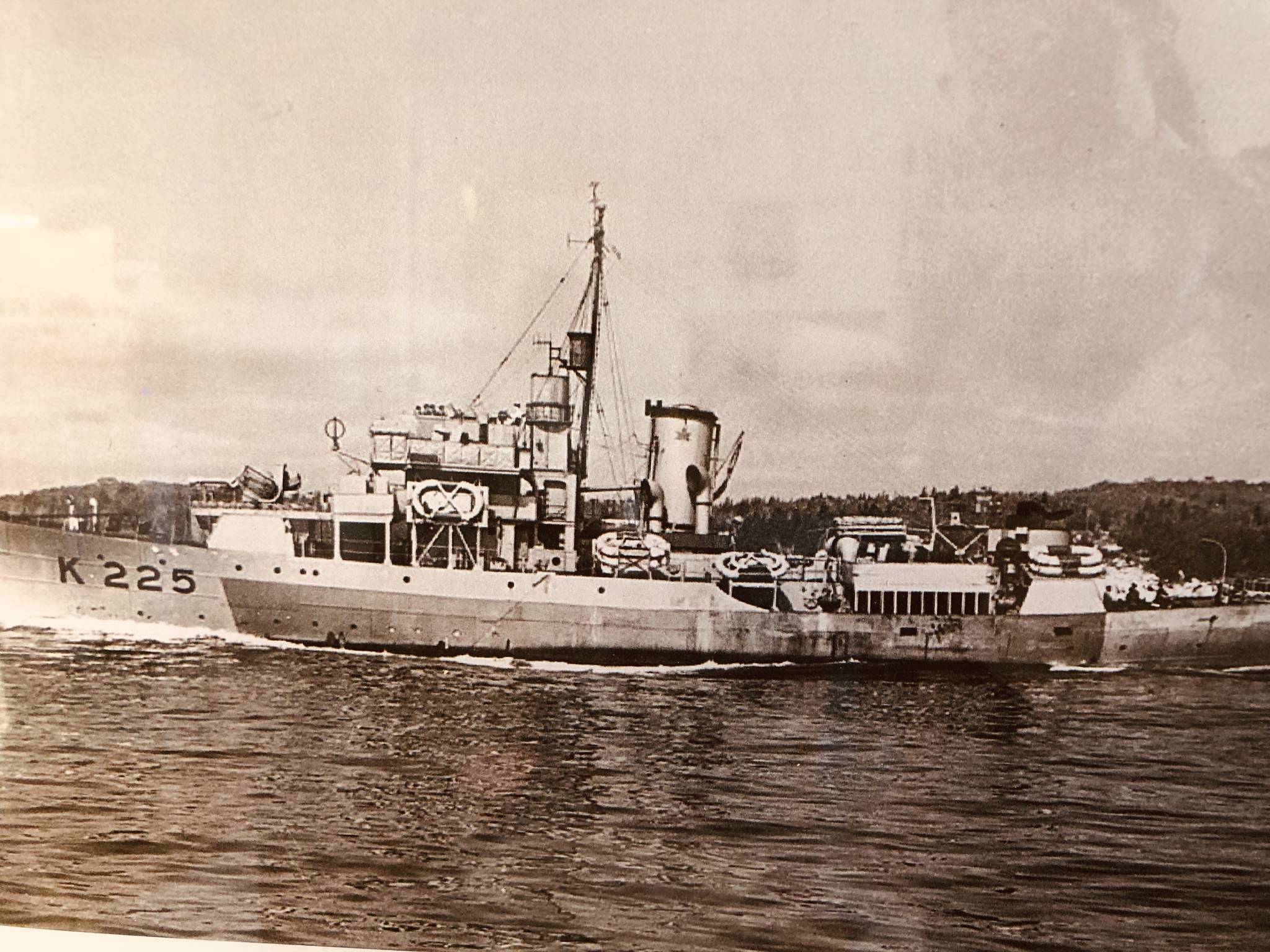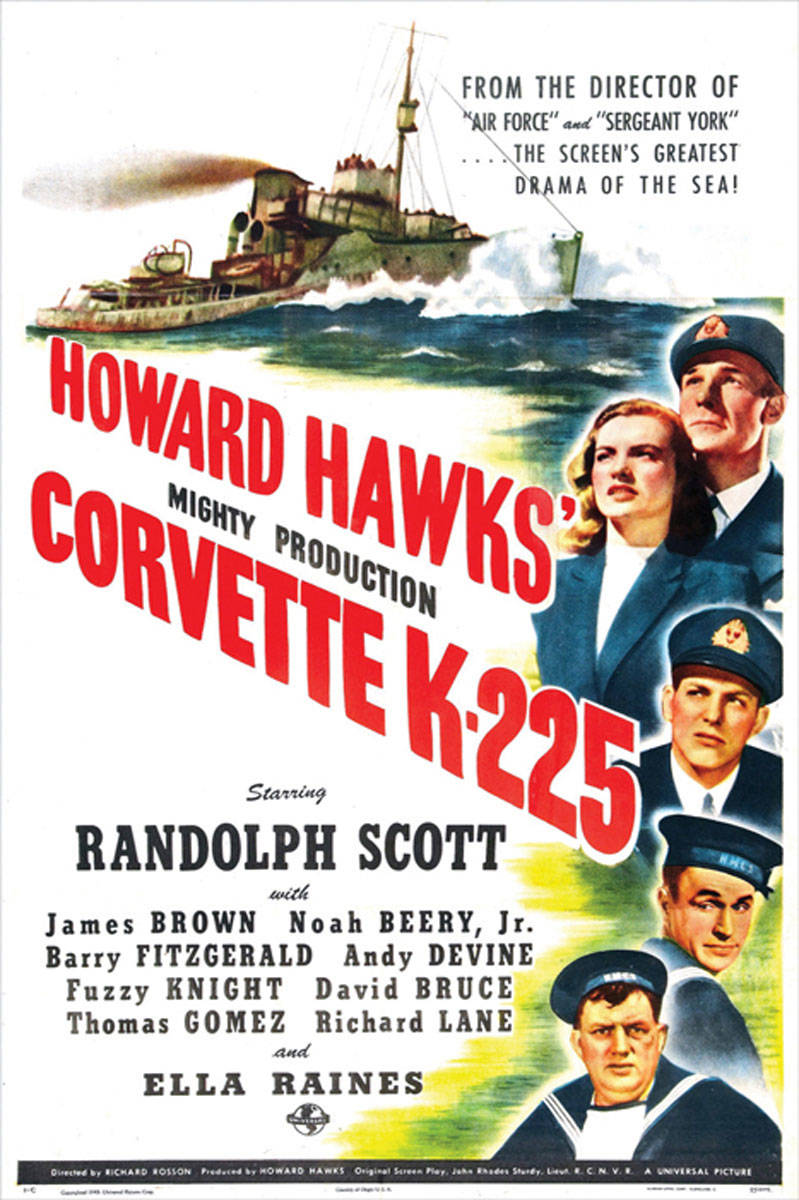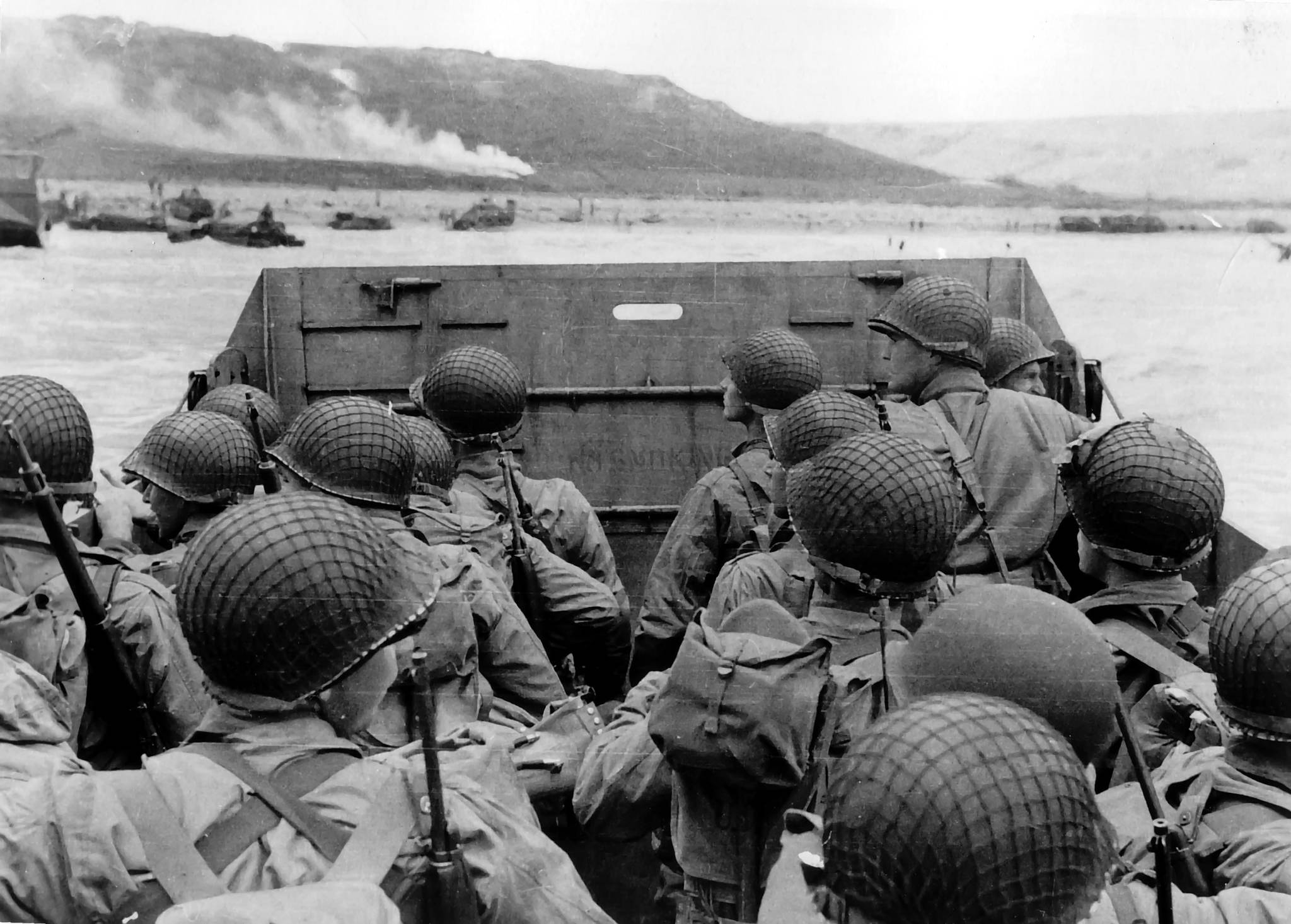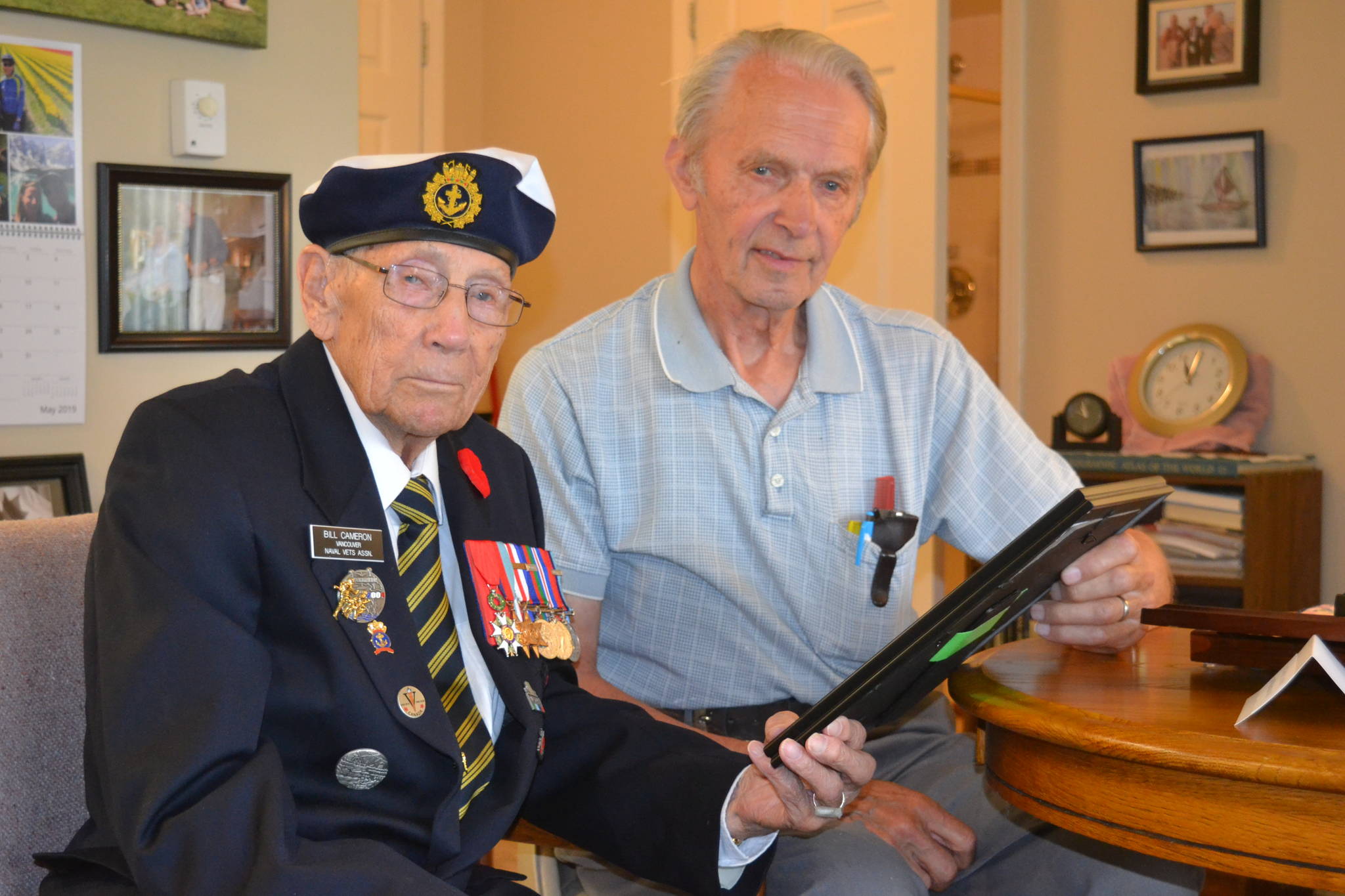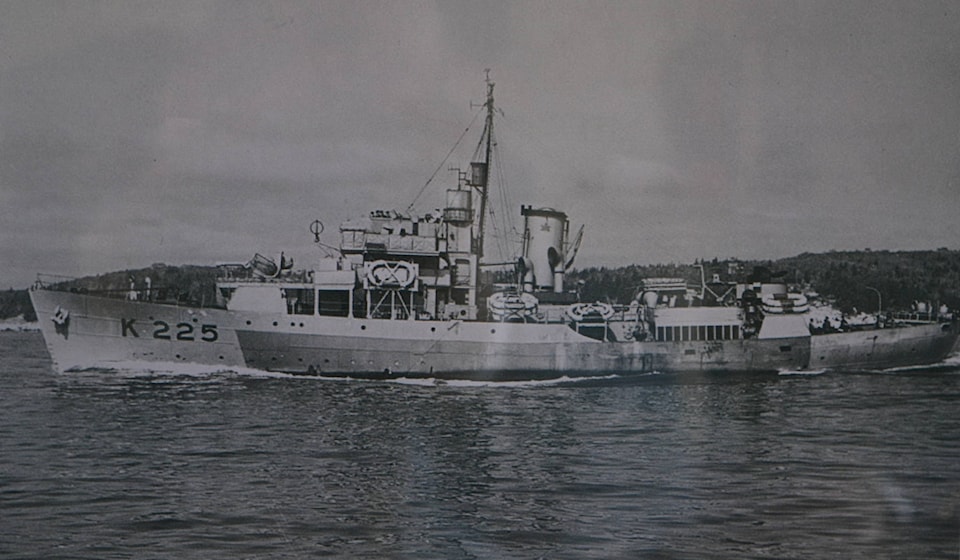For most Canadians, D-Day – the beginning of the Battle of Normandy that eventually turned the tide of the Second World War and led to the defeat of Adolf Hitler’s Third Reich – is something out of a history book.
But not for Bill Cameron. For the 95-year-old Canadian Navy veteran, a resident of South Surrey’s Crescent Gardens, D-Day – June 6, 1944 – is still a vivid memory 75 years later.
Barely out of his teens as a junior officer on the corvette HMCS Kitchener, the Manitoba-born, Vancouver-raised Cameron spent D-Day at the sights of a 20mm Oerlikon anti-aircraft cannon on the ship’s bridge, helping protect American troops pouring off landing craft at heavily-defended Omaha Beach.
Due to its relatively small size, and shallower draught, the Kitchener was able to get closer to shore – and the heart of the action – than the cruisers and battleships that laid down the immense Allied artillery barrage that began the battle.
At the same time, thousands of other troops were landing at four other beaches on the same stretch of the Normandy coast – Canadians at Juno, British at Sword and Gold, and more Americans at Utah.
Cameron remembers being scared – just like the rest of his 100 comrades on the Kitchener. But for him, there wasn’t much time to reflect on the danger they were in. He was too busy sighting the gun at German fighter planes roaring overhead on strafing runs over the ships and the beach.
Those memories will likely be even more vivid for him at tomorrow’s anniversary of D-Day.
Cameron, a recipient of the order of the Legion d’honneur, France’s highest honour, is on Normandy’s shores once more, at the invitation of the French government, on a trip paid for by the Canadian people.
Accompanying him will be his daughter Donna; sadly Joyce, his wife of 70 years – she was with him the last time he revisited Normandy in 2014 for the 70th anniversary of D-Day – passed away on Good Friday.
“I still have a little cry every day, when I see her photo,” Cameron said, but added he was determined to go to France for this year’s milestone remembrance nonetheless.
Assisted by his Crescent Gardens neighbour Kees Koster, the long-retired Cameron – he spent 30 years on the road selling chemical supplies after the war – was happy to meet with the Peace Arch News recently to share his memories and mementos.
At Cameron’s suggestion, Koster, 84, also helped shed some light what D-Day meant to those in Europe living under occupation by the troops of Nazi-controlled Germany.
Only a nine-year-old boy living near Rotterdam at the time, he still recalls the impact as the news of the Allied invasion spread rapidly among the civilian population living in near-starvation conditions in occupied Holland.
“There was a great sense of hope and relief,” he recalled. “We thought it would all be over in a couple of months, but at that time we didn’t know it will still be 11 months until the end of the war. And unfortunately the winter of 1944-45 was one of the coldest on record.”
Bitter conditions and German counterattacks slowed the Allied advance – and Koster said the privations continued until the next spring (he and his brother combed through German soldiers’ garbage in search of edible scraps).
Such ongoing hardships in occupied Europe could only have been guessed by Cameron and his comrades on D-Day. But none could have missed the significance of the moment when the liberation of Europe began.
One of his strongest memories of the journey across the English Channel from Plymouth Harbour is of the sheer volume of troops and equipment being brought into play, in what Allied supreme commander Dwight D. Eisenhower praised as the ‘Great Crusade’ in a letter given to each combatant before the battle (Cameron still treasures the original he received that day).
“There wasn’t a bit of water where there wasn’t a ship and a not a bit of sky in which there weren’t planes,” he recalled. “It was the largest amphibious assault in history.”
But it didn’t take long for Allied troops to grasp the full import of the warning contained in Eisenhower’s letter.
“Your task will not be an easy one,” he had written. “Your enemy is well-trained, well equipped and battle-hardened…he will fight savagely…”
On Omaha Beach, Cameron said, the attacking Americans of the U.S. 1st and 29th Infantry divisions found the truth of that as they faced a broad expanse of sand, without cover, in front of a “huge bank, 180 feet high.”
“The Germans were on top shooting at them with everything they had – they were taking them down in the water almost as soon as they stepped off the landing barges,” he said.
“What we were told to do was go over with the landing barges and protect them as much as we could; shoot as many aircraft down as we could.
“I was stationed on the bridge with the captain, and we had three of these 20mm guns on the starboard and three on the port. I’m only 20 years old and I’m scared to death like everyone else. We were scared as hell. There are three men to each gun – one was to load the magazine, the other was to help train the gun, and my job was to sight and shoot at the planes that were coming at us.”
Cameron, who had shown aptitude for gunnery during training and during runs protecting supply convoys in the North Atlantic, had been unofficially appointed supervisor of the gun crews on the Kitchener.
“I didn’t have any official recognition, but I had to make sure all the guns were operating properly,” he said.
But there was a clear difference between studying aircraft recognition charts, and the planetarium-like gunnery schools the crews attended whenever they were in port long enough, and experiencing actual battle conditions.
“If a plane is coming along broadside to you it’s going at maybe 450 to 500 miles per hour,” he said.
“You didn’t have time to line it up into your sights – you had to shoot and guess the deflection. If one goes down, bang, you’re looking for the next guy… I guess I did pretty good because I heard the captain yell, at one point, ‘good shooting, Cameron.’”
What scared him most of all, he said, were the aircraft coming straight at them.
“Because you knew they were trying to knock the bridge out,” he said.
Fortune was on the Kitchener’s side, however.
Cameron said that although the ship was “knocked about a bit,” none of the crew were lost during D-Day. And after three days moored offshore – Cameron still recalls “lots of bodies and all kinds of supplies floating in the water” – they were back in port in England again, and back to their regular duty of keeping the English Channel free of U-boats.
That was by no means a ‘milk-run’ assignment.
“The Germans were very active in the Channel,” he said, adding that three Canadian corvettes were lost there during the war.
“And each time one went down, maybe half the crew were lost – about 50 or 60 men.”
He gives a lot of credit to the corvette’s captain, who was adept in using the ship’s inherent maneuverability to dodge trouble – skills developed during their work protecting supply convoys from ‘wolf packs’ of German U-boats on the North Atlantic run.
“Any report of anything strange in the water and he’d turn that ship around,” he said, remembering one incident during the war in which the crew watched a torpedo pass alongside – some eight feet from the hull – after the captain made a lightning change of course.
Although the small corvettes – Canada built some 180 during the war – were known as the “wettest ships in the Navy” (“they rolled like a cork,” Cameron said) they were famous for their ability to engage in the cat-and-mouse game of anti-submarine warfare, utilizing ASDIC sonar systems to track U-boats under water, and depth charges to destroy or disable them.
Indeed, the Kitchener – assigned the identifying numerals K-225 – was already famous by the time of D-Day, thanks to a Hollywood movie.
Corvette - K225 (1943), produced and co-directed by famed director Howard Hawks, was one of a handful of U.S. movies that helped boost the Canadian war effort, and war bond sales, by depicting Canadian service personnel (although in most cases played by American movie actors) in heroic action.
The movie, partly shot on location in Halifax, N.S., and in the North Atlantic, focused on K-225’s convoy protection duties – although the ship was rechristened the HMCS Donnaconna for the fictional plot.
Cameron knows it well.
“It starred (Hollywood actor) Randolph Scott,” he remembered. “It was made a month before I joined the Kitchener in Halifax. It had come back from a South Atlantic run, so they shot it while it was doing a refit.”
Given the circumstances under which it was made, it painted an authentic picture of anti-submarine warfare and life on a corvette, Cameron said – and helped keep a lot of wartime memories alive.
“I had a (VHS) copy of it at one time,” he said. “But I ran it so much it fell apart.”
